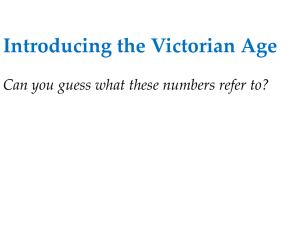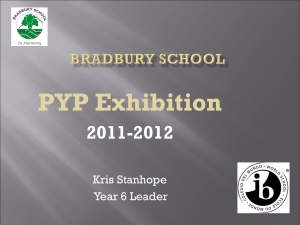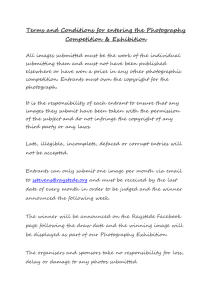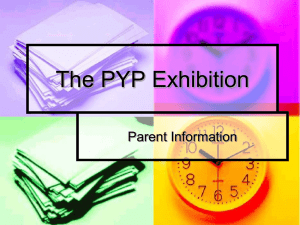The Great Exhibition
advertisement
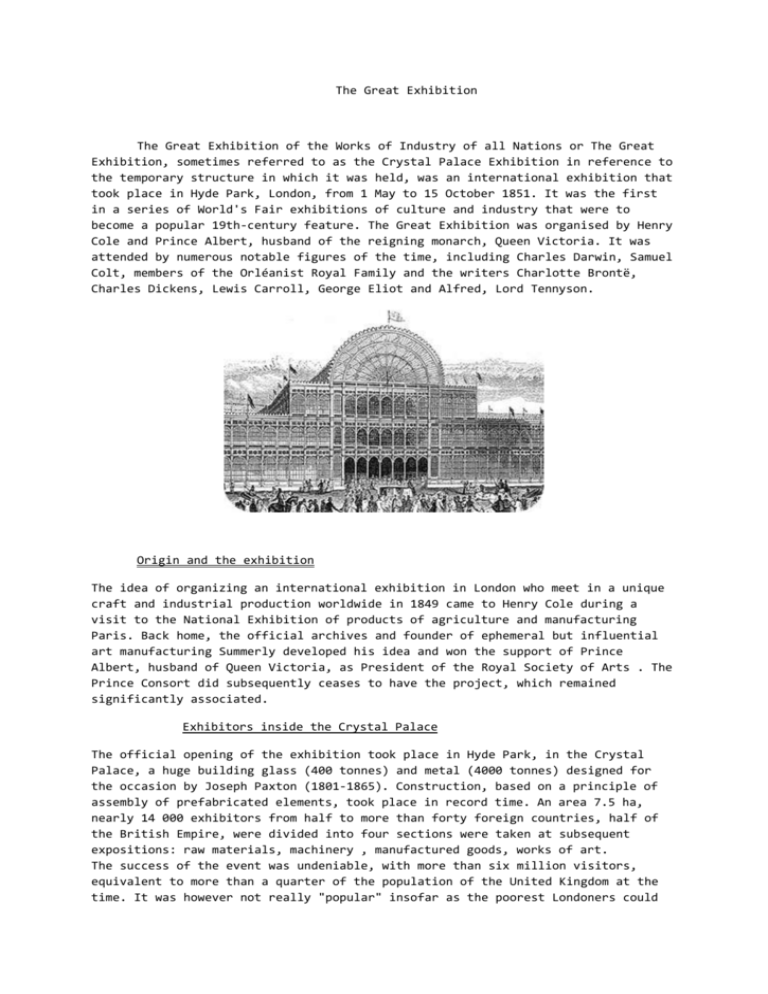
The Great Exhibition The Great Exhibition of the Works of Industry of all Nations or The Great Exhibition, sometimes referred to as the Crystal Palace Exhibition in reference to the temporary structure in which it was held, was an international exhibition that took place in Hyde Park, London, from 1 May to 15 October 1851. It was the first in a series of World's Fair exhibitions of culture and industry that were to become a popular 19th-century feature. The Great Exhibition was organised by Henry Cole and Prince Albert, husband of the reigning monarch, Queen Victoria. It was attended by numerous notable figures of the time, including Charles Darwin, Samuel Colt, members of the Orléanist Royal Family and the writers Charlotte Brontë, Charles Dickens, Lewis Carroll, George Eliot and Alfred, Lord Tennyson. Origin and the exhibition The idea of organizing an international exhibition in London who meet in a unique craft and industrial production worldwide in 1849 came to Henry Cole during a visit to the National Exhibition of products of agriculture and manufacturing Paris. Back home, the official archives and founder of ephemeral but influential art manufacturing Summerly developed his idea and won the support of Prince Albert, husband of Queen Victoria, as President of the Royal Society of Arts . The Prince Consort did subsequently ceases to have the project, which remained significantly associated. Exhibitors inside the Crystal Palace The official opening of the exhibition took place in Hyde Park, in the Crystal Palace, a huge building glass (400 tonnes) and metal (4000 tonnes) designed for the occasion by Joseph Paxton (1801-1865). Construction, based on a principle of assembly of prefabricated elements, took place in record time. An area 7.5 ha, nearly 14 000 exhibitors from half to more than forty foreign countries, half of the British Empire, were divided into four sections were taken at subsequent expositions: raw materials, machinery , manufactured goods, works of art. The success of the event was undeniable, with more than six million visitors, equivalent to more than a quarter of the population of the United Kingdom at the time. It was however not really "popular" insofar as the poorest Londoners could afford at least a shilling to gain access to Crystal Palace. There was also not the purpose, audience within more crafts and middle classes. Net income rose to 186,000 pounds. Prince Albert and Henry Cole proposed to use the money to create a great educational center that would bring educational institutions, science and art in keeping with the objectives that were set at the Great Exhibition. A great land was acquired for this purpose south of Hyde Park in South Kensington. On this ground, soon nicknamed Albertopolis were built the Victoria and Albert Museum, the Science Museum and the Natural History Museum. The objectives of the exhibition Educate the British in the cult of the machine The exhibition initially wanted a means of education and of the British people, beyond the world as a whole: to develop a taste of the middle class and raise moral among workers, even if we do not give really means for the second goal given the relatively high price of the ticket. Above all, the exhibition was to disseminate the British craftsmen and industrialists latest technological developments: "This is one of the essential aspects of exposure, where the machine is virtually deified". Ensure world peace through free trade Another objective, if one believes the inaugural speech of Queen Victoria to promote peace, brotherhood and solidarity between the peoples of the world. And what better way trade between the different peoples of humanity to ensure that bright horizon? This is a central element of the speech released by the organizers of the Expo 1851 trade, therefore we are developing, in the tradition of Adam Smith, free trade and the division of labor is only able to create in everyone's deep conviction of the unity of mankind and ensure complete happiness of humanity stripped of its evils. While it is still in its preparatory phase of the exhibition, 21 March 1850, Prince Albert is clearly expressed in his speech at Mansion House. "We live in a period of extraordinary transition, which leads us to this glorious end towards which the whole story: the completion of the oneness of humanity. [...] The great principle of the division of labor, which can be seen as the driving force of civilization, is extended to all branches of science, industry and art. [...] Resources around the globe are at our disposal and we have only to choose what is best and most economical way to serve our purposes, the powers of production are assigned to the stimulus of competition and capital. Here we find the Prince Consort in the accents of Richard Cobden boasting - in all sincerity - the radiant opportunities offered by the development of soft trade. This "thanks to free trade, should allow harmony and peace among the nations, civilized or not, dividing the tasks of each according to the principle of the division of labor and comparative advantages". Exhibit the power of the industry, empire and British social Singing the praises of free trade was even more obvious to the British that they had gradually made over the past decades a major focus of their world politics, the removal of the Corn Laws in 1846 scoring only the term ownership identity and national free-trade doctrine. It was therefore logical that some British vision of the world, focused on the development of industrial production and trade, take shape and visibility in the vaults of a Crystal Palace that "masterpiece of industrial architecture "by itself showed technical virtuosity British: as Charles-François Mathis said," This world view was not shared by all, but by a large majority of the population (UK), ready to defend what has propelled the country to the forefront of civilization. " British industrial triumph burst from every point of view, then, that more than half of the exhibitors are British credence to the image of Britain "workshop of the world". Of these more than 7,000 exhibitors British, it must be noted that many were not from Britain but of the empire, the centerpiece of an exhibition in which "production transportable each colony were presented ". From this viewpoint, exposure contributed to stress from abroad as the average Englishman, the imperial grandeur of the United Kingdom, the preferred tool of British influence on the world. In addition, the organization of the Great Exhibition, also reflected the strength of the social order and to the British throne. Belying fears of revolutionary excesses, the crowds that flocked to London showed their respectability and deference to authority and hierarchies in place. It did indeed nothing obvious to contemporaries of the event, in a context, even declining, Chartist agitation and only three years after the Spring of Nations. The exhibition of 1851 was of the view seen by many as a showcase of capitalism and a response to the rise of the doctrine of socialist commitment. The elites of the time wanted to interpret this success as the symbol of the triumph of Victorian values of honesty, modesty and work. François Bédarida speaks well to describe the speech innervait exposure of "the gospel of work: through the huge gathering creations of human industry, it was first to honor the working bees of the hive world ". More broadly, The Great Exhibition of the Works of Industry of all Nations marked the acme of industrial and commercial triumph of Victorian Britain and its influence on the world, either formally or informally. This rule held thereafter, and in particular from the years 1870/1880, to decline to compete for new powers such as the United States or Germany.

